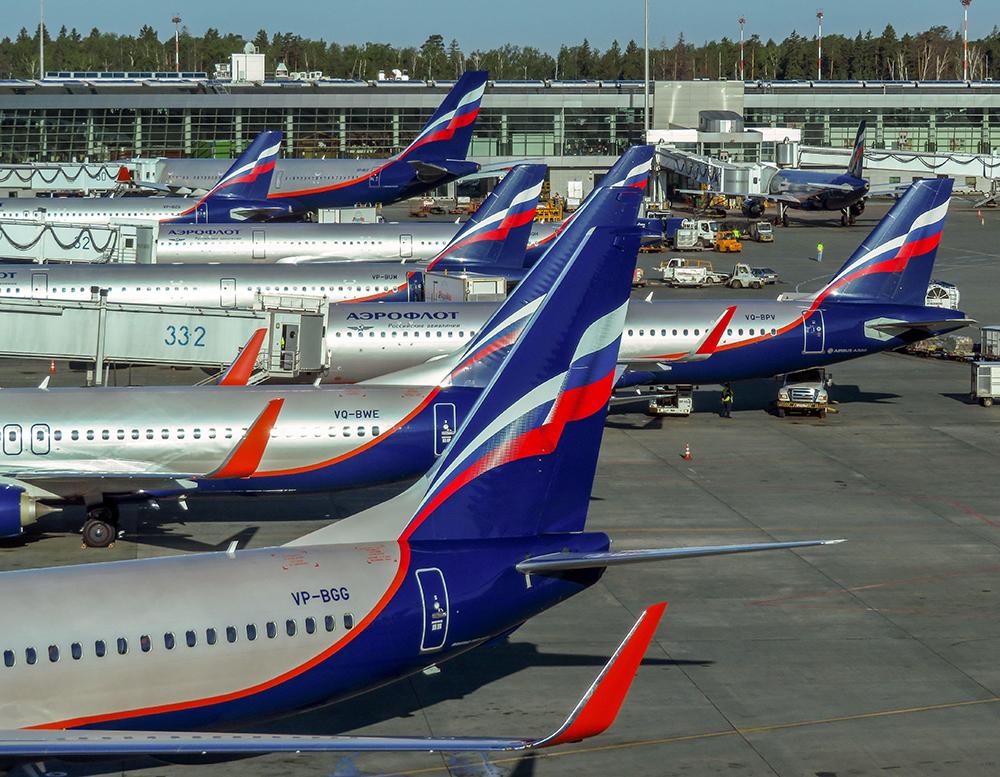Opinion: Russia’s Tools to Keep Its Civil Fleet Airborne

Just when it seemed like COVID-19 was in the rearview mirror, the aerospace industry has been shaken yet again by Russia’s unprovoked invasion of Ukraine. Industry stakeholders are now assessing the implications as quickly as possible.

One early observation is that around 76% of the Russian fleet is leased with foreign lessors, according to Aviation Week Network’s Fleet Discovery data, and the prospects for repossessing any significant portion of these approximately 600 aircraft are essentially nil. The Russian government, which oversees 11 time zones, can’t afford for its aviation network to collapse, so it is on a path to effectively nationalize the fleet by re-registering aircraft in the country. With Russian airlines also suspending international flights, the window to seize aircraft while they are abroad has closed.
On top of this, western OEMs have cut off technical support and spare parts sales to Russian operators. With no spares or technical support, lapsed insurance coverage and airworthiness certificates being revoked by regulators outside of Russia, this must mean that the Russian fleet has essentially become very expensive paperweights, right?
Not quite. While these sanctions will surely squeeze Russian operators, it will not entirely stop these aircraft from flying all together—the faucet is not completely off and will still drip. Russia has several tools at its disposal to weather these aviation sanctions, at least for a limited period.
Russia’s first likely move is to burn through any inventory available in-country and potentially cannibalize its own fleet. With Russia’s economy expected to contract around 10% this year and the suspension of international flights, air travel demand in Russia will correspondingly suffer, meaning there are already excess aircraft relative to needs. This leaves room to park aircraft and harvest them as required, which is not dissimilar to what the industry witnessed at the depths of the COVID-19 pandemic. Of course, this can’t last forever as a skeleton fleet eventually emerges, at which point Russia will begin relying on its next tool.
In contrast with other countries that have faced aviation sanctions, Russia has a sizeable domestic aerospace industry and talent pool to leverage. In 2018, AeroDynamic Advisory estimated that Russia has the sixth-largest aerospace industry with approximately $27 billion in output, or around 3% of the global total. Employment is on the order of hundreds of thousands between the factories, design bureaus and other supporting functions.
Say what you will about the commercial success of programs like Ilyushin, Tupolev, Irkut and Sukhoi—the important point is that there is a history of designing and building aircraft, engines and components. The engineering base will suddenly have nothing to do with dismal export prospects and can thus focus its efforts on reverse engineering and establishing alternative sources of supply. Some aircraft equipment, especially those more reliant on software or highly proprietary processes, will of course be difficult or impossible to reverse engineer. However, some electro-mechanical products, consumables/expendables and non-flight critical items could be vulnerable.
The difficulty will also likely vary by aircraft generation. Developing alternative solutions for a new generation Boeing 787 or Airbus A350 will be far harder than an aircraft program that has been around for decades, such as the A320ceo or 737NG.
Russia’s third option is to employ the tools used by another country subject to sanctions—Iran. Civil aviation in Iran has been subject to sanctions ever since the 1979 hostage crisis, and the sanctions regime expanded in 2007. Despite these restrictions, Iranian operators were able to continue operating aging Airbus, Boeing, McDonnell Douglas and Fokker jets with an average age of around 23 years and no deterioration in their safety record, according to The Washington Institute. Iranian operators have survived using intermediaries and front companies to procure spare parts—the aerospace black market so to speak. It is difficult and expensive, but Iran has nevertheless shown that it is possible to maintain some semblance of a civil aviation network.
None of these options are particularly easy, and even if Russia is successful, the active fleet will be a shell of its pre-invasion self. The world is also more united in sanctions against Russia compared to Iran, and the fleet in Russia is far larger, so perhaps preventing the development of an aerospace black market is easier this time around.
Regardless of what tactics Russia employs to keep its fleet flying, there is a daunting implication to consider: If relations do normalize and lessors gain access to their assets again, records could be a mess. This means longer periods to prove that sufficient maintenance was completed and correct any deficiencies before remarketing the assets. This assumes, of course, that these aircraft ever re-emerge from the new iron curtain at all.
Mike Stengel is a senior associate at consultancy AeroDynamic Advisory in Ann Arbor, Michigan.
The views expressed are not necessarily shared by Aviation Week.




